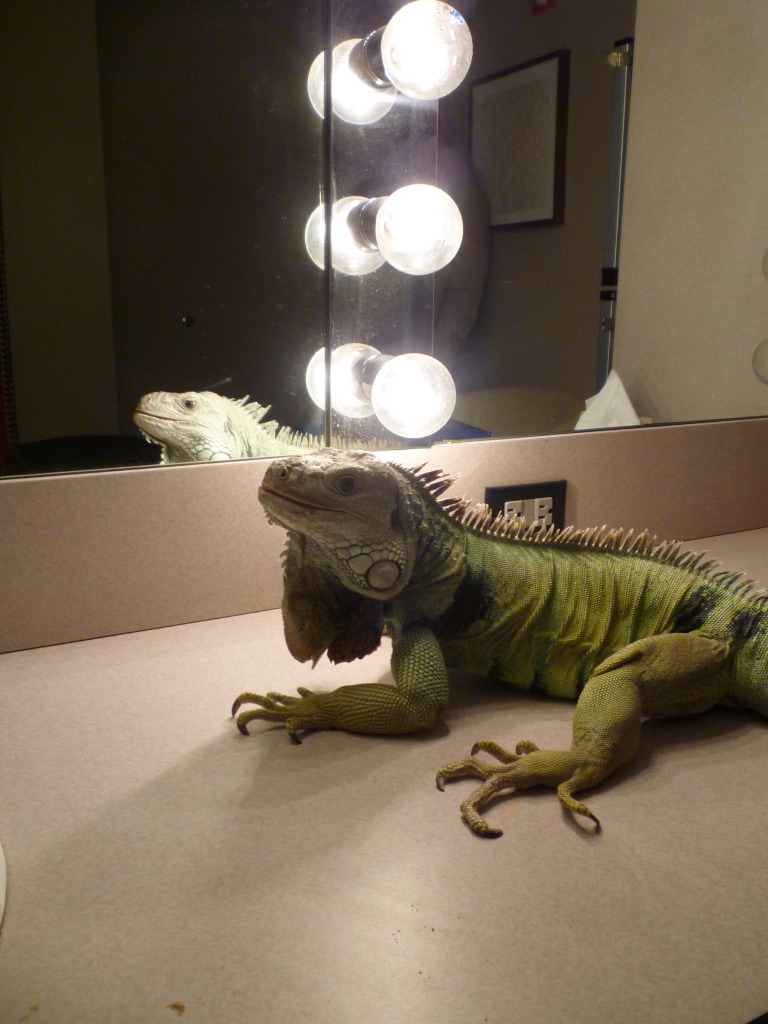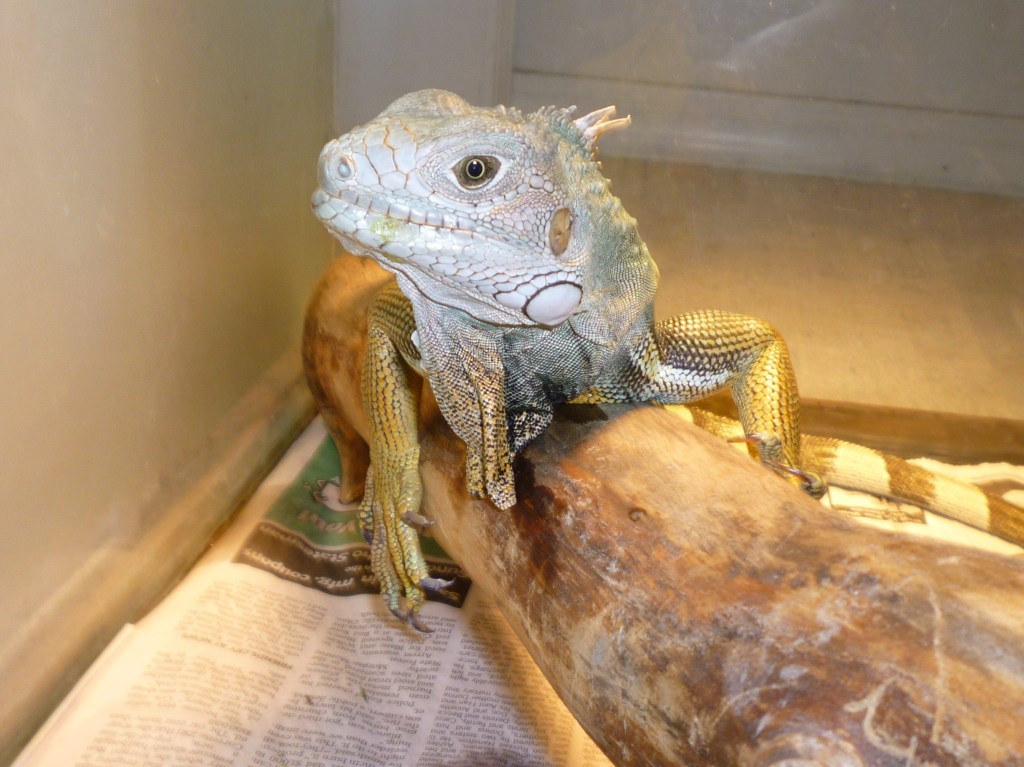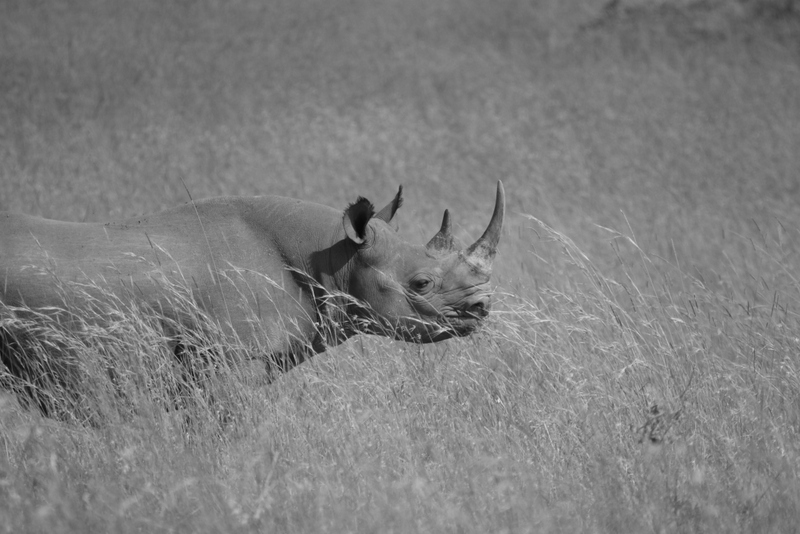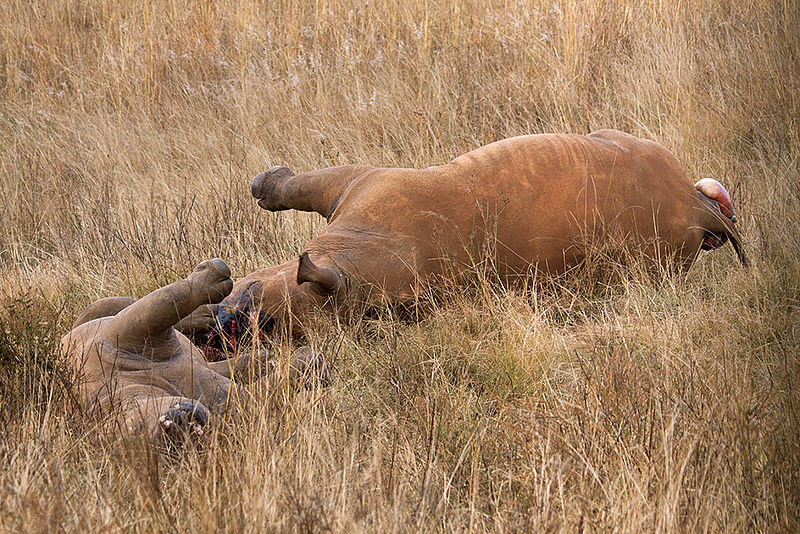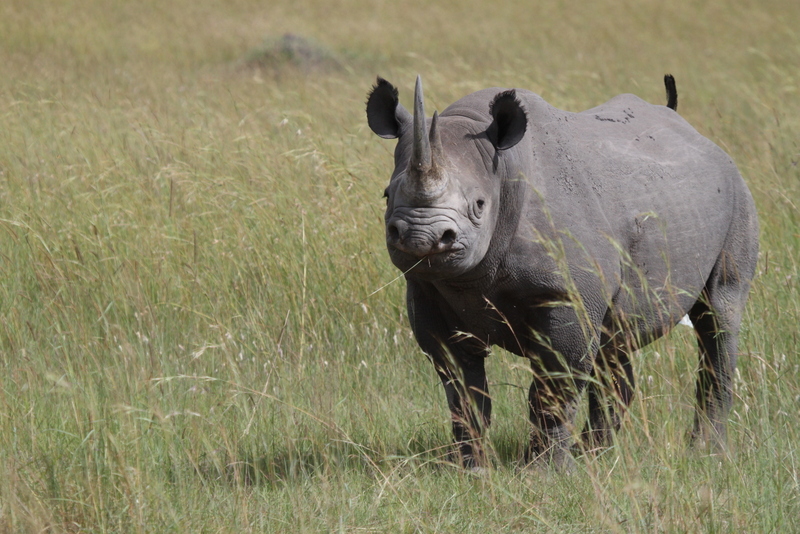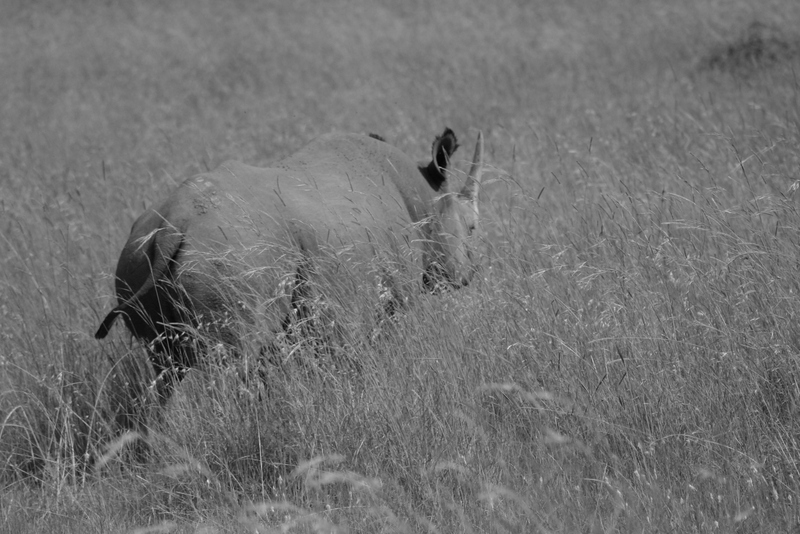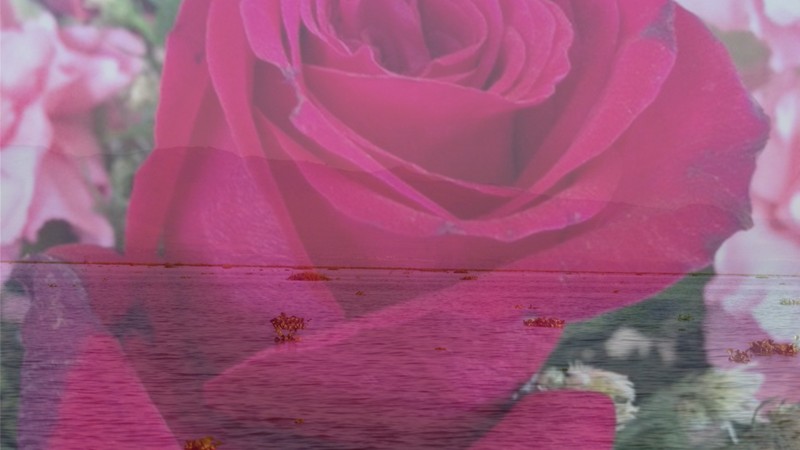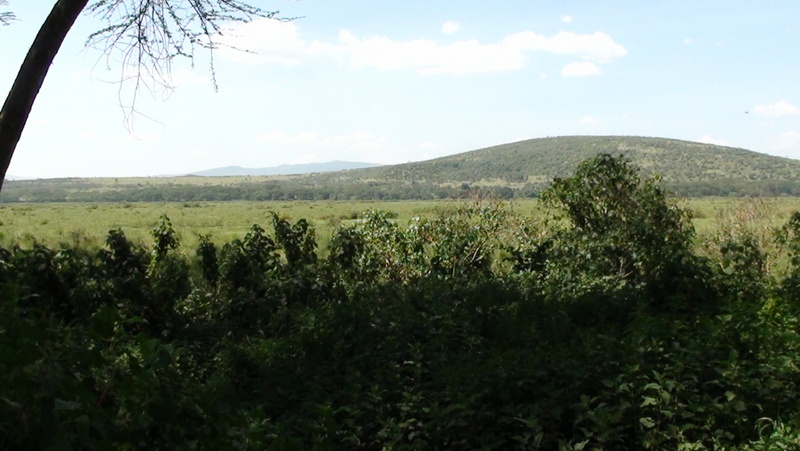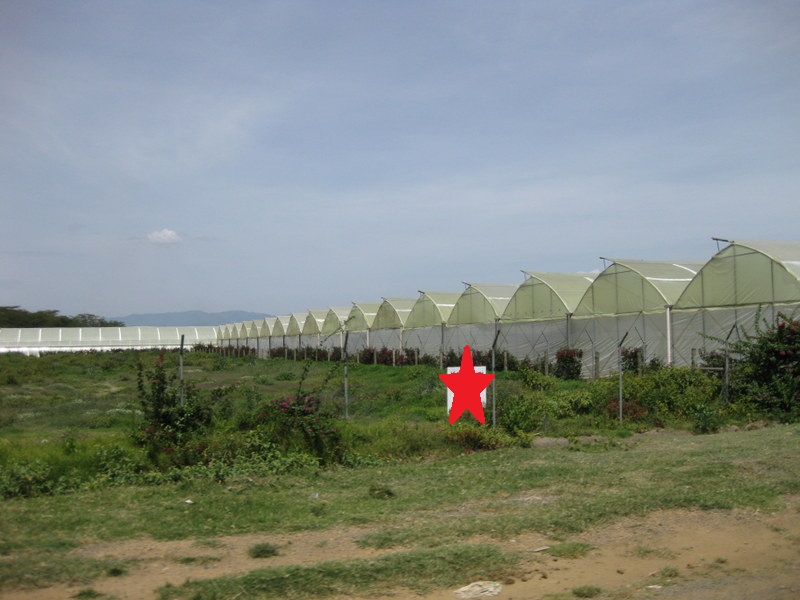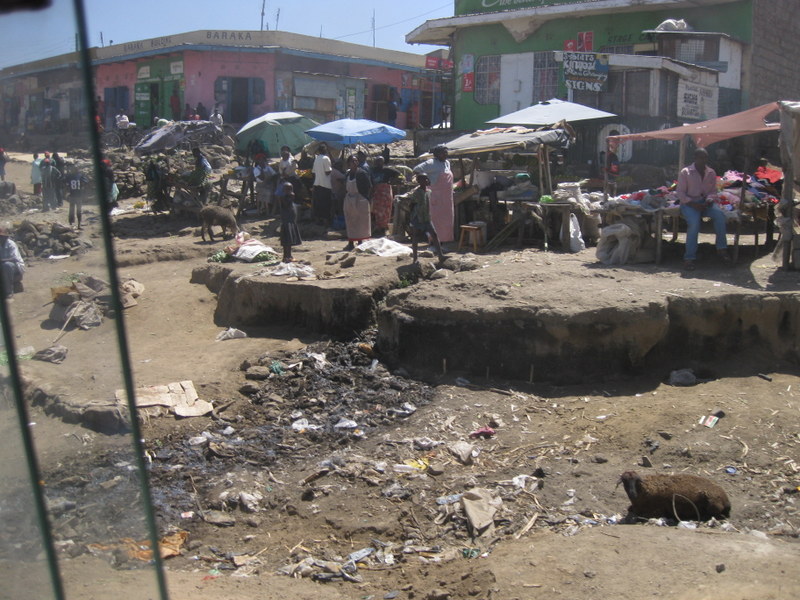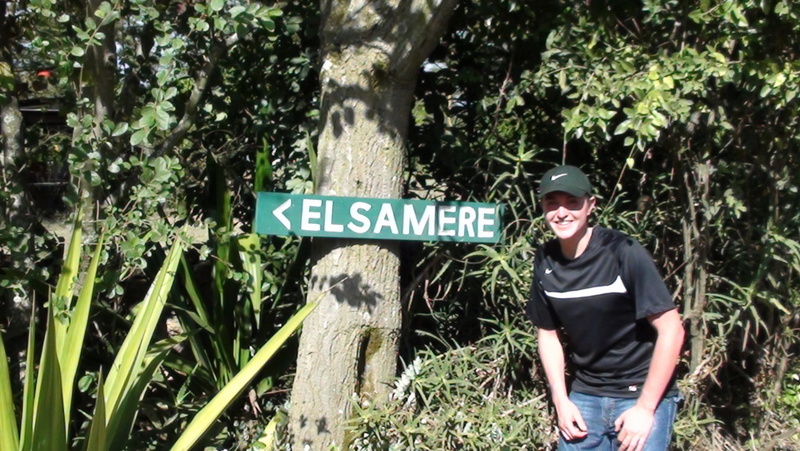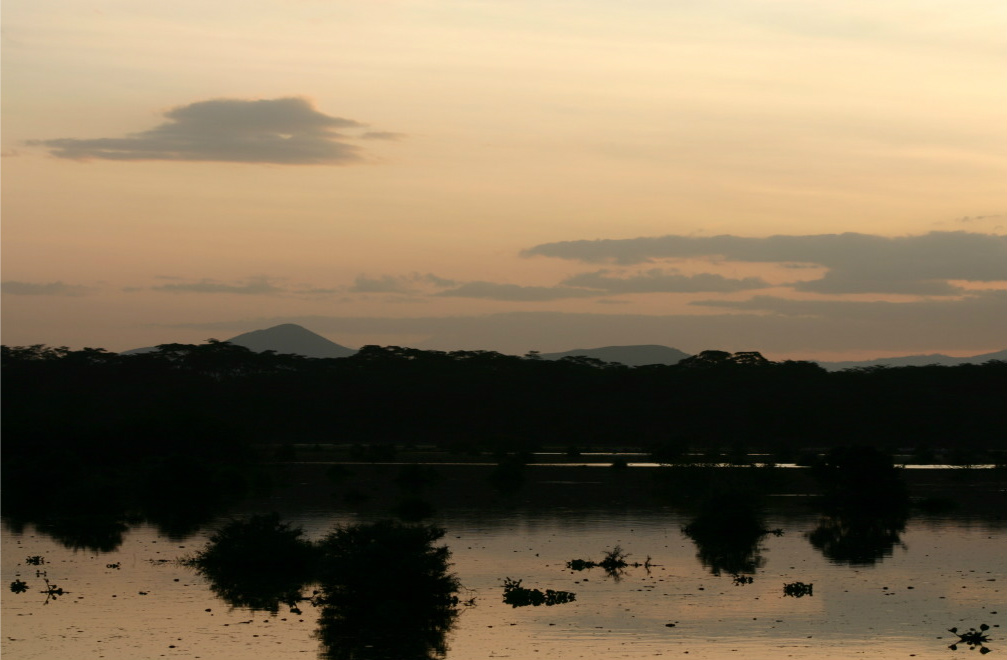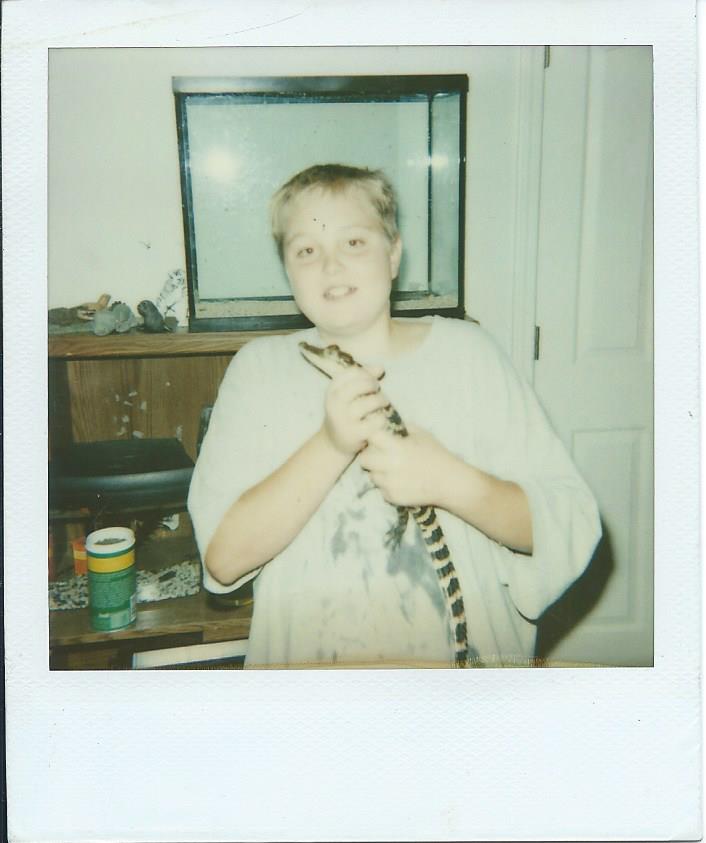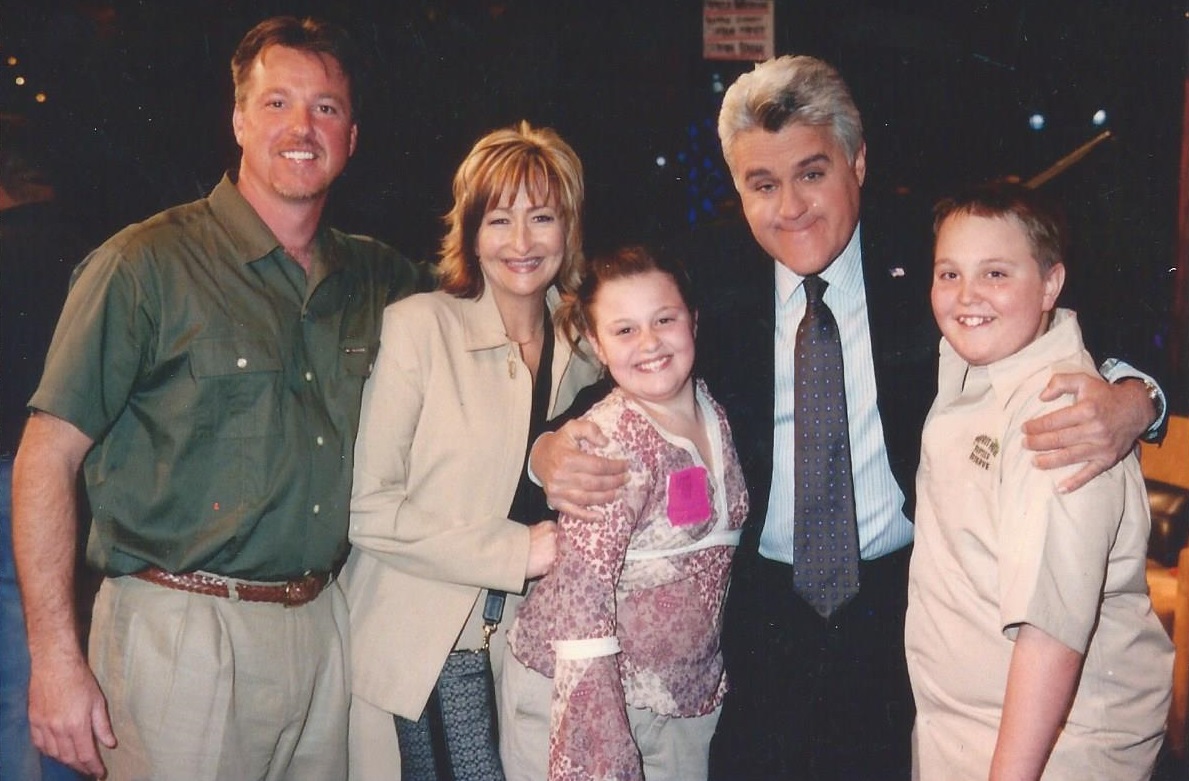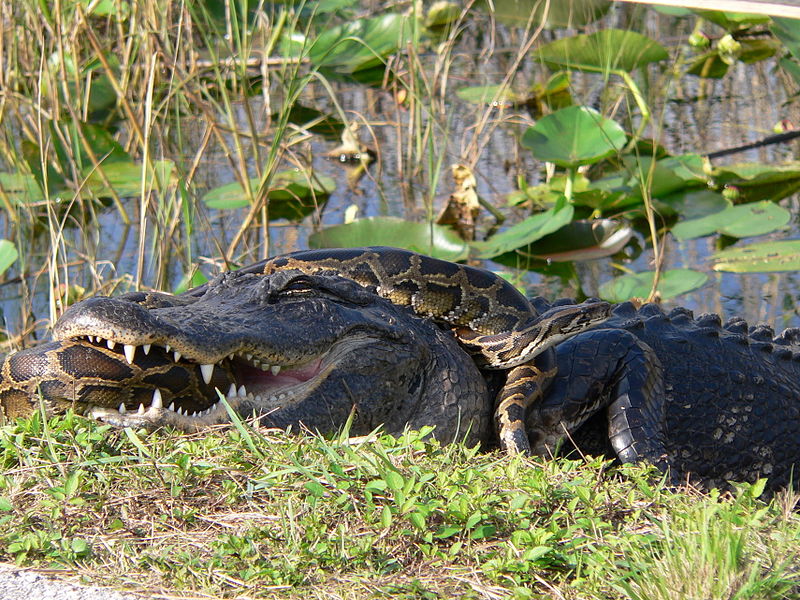 It was a struggle that was seen by many; an alligator attempting to swallow a Burmese Python in the Florida Everglades National Park. There's definitely something wrong with this picture; Burmese Pythons and alligators would never naturally meet in the wild. Both species live at opposite ends of the planet; alligators from the Southeastern part of the United States and Burmese Pythons from Southeast Asia. So why are they encountering each other now? Irresponsible pet owners who released their pet pythons once they reached a certain size and natural disasters like hurricanes all attribute to why this python can now be found in the Florida Everglades. What's worse is that this python has no natural predators, competes for the same resources as other animals, and eats endangered species. During the last few years, Burmese Pythons have become a poster child for invasive species and their negative impacts to the environment, economy, and safety of humans. And they aren't alone. I put together a few prime examples of invasive species. I hope you enjoy it and more importantly take away from it on how you help prevent the spread of Animal Aliens.
It was a struggle that was seen by many; an alligator attempting to swallow a Burmese Python in the Florida Everglades National Park. There's definitely something wrong with this picture; Burmese Pythons and alligators would never naturally meet in the wild. Both species live at opposite ends of the planet; alligators from the Southeastern part of the United States and Burmese Pythons from Southeast Asia. So why are they encountering each other now? Irresponsible pet owners who released their pet pythons once they reached a certain size and natural disasters like hurricanes all attribute to why this python can now be found in the Florida Everglades. What's worse is that this python has no natural predators, competes for the same resources as other animals, and eats endangered species. During the last few years, Burmese Pythons have become a poster child for invasive species and their negative impacts to the environment, economy, and safety of humans. And they aren't alone. I put together a few prime examples of invasive species. I hope you enjoy it and more importantly take away from it on how you help prevent the spread of Animal Aliens.
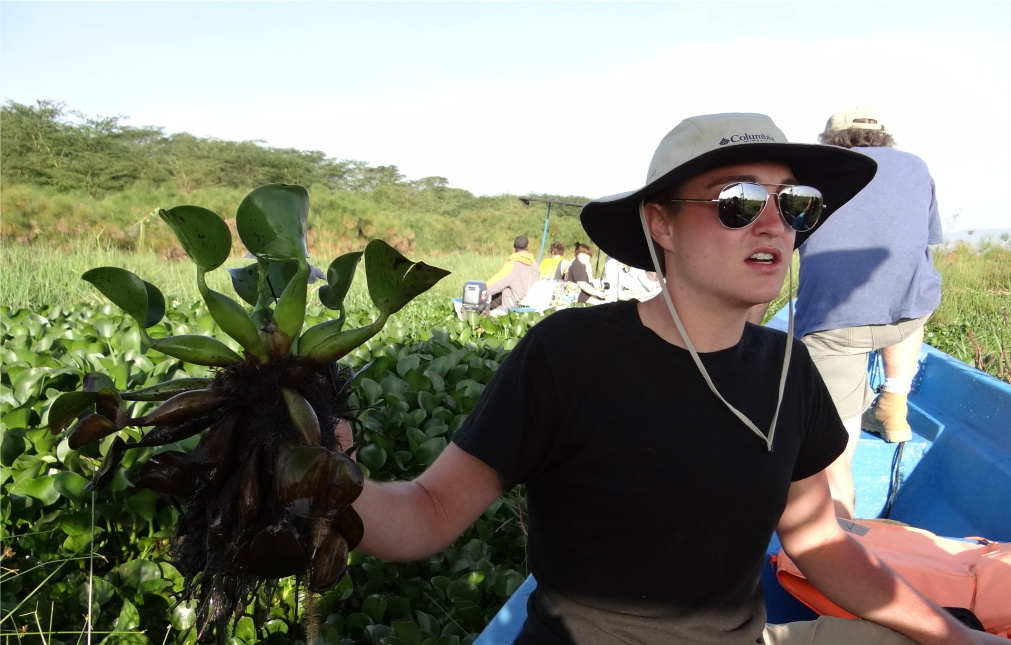
Invasive species are any plants or animals that aren't native to an ecosystem that cause harm. This harmless looking plant that most people purchase to stock their ponds is one of the world's worst weeds!
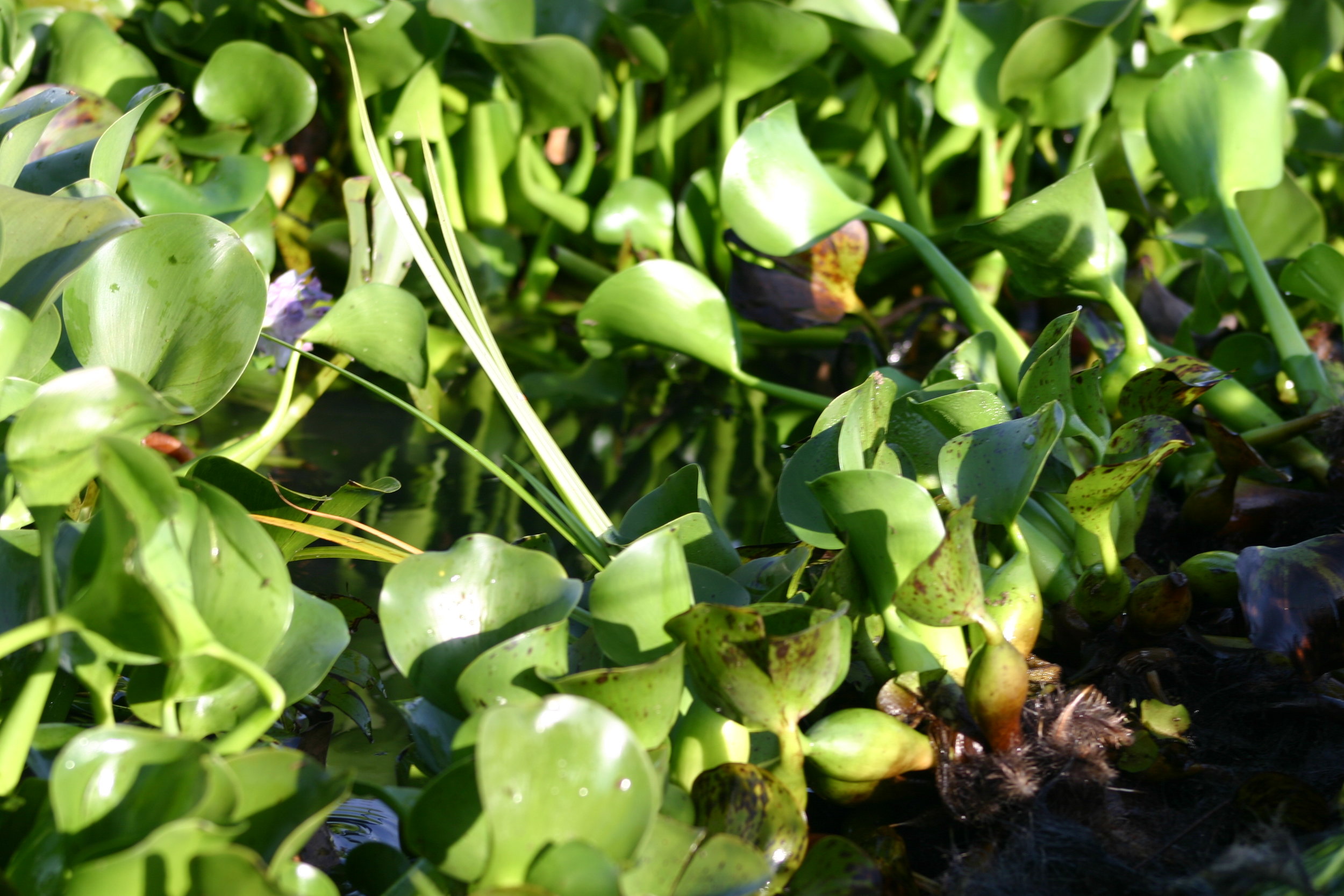
The water hyacinth is native to South America but can be found on nearly every continent thanks to it's attractiveness as a pond plant. It forms dense masses and blocks the sunlight for submerged plants and aquatic animals. It also clogs waterways and limits boat transportation which inadvertently affects fisherman who rely on the lake for their livelihood.

Historically pigs have never been found in the Americas...But they've been here awhile. They were first brought in by early European Explorers for food in the 1500's. In the 1930's Eurasian Wild Boars were also introduced for hunting purposes. Now in parts of North America you have a hybrid species that is extremely prolific at breeding, aggressive, and eats almost anything! They can be found in 45 states and due to their secretive, nocturnal nature are hard to often come by.
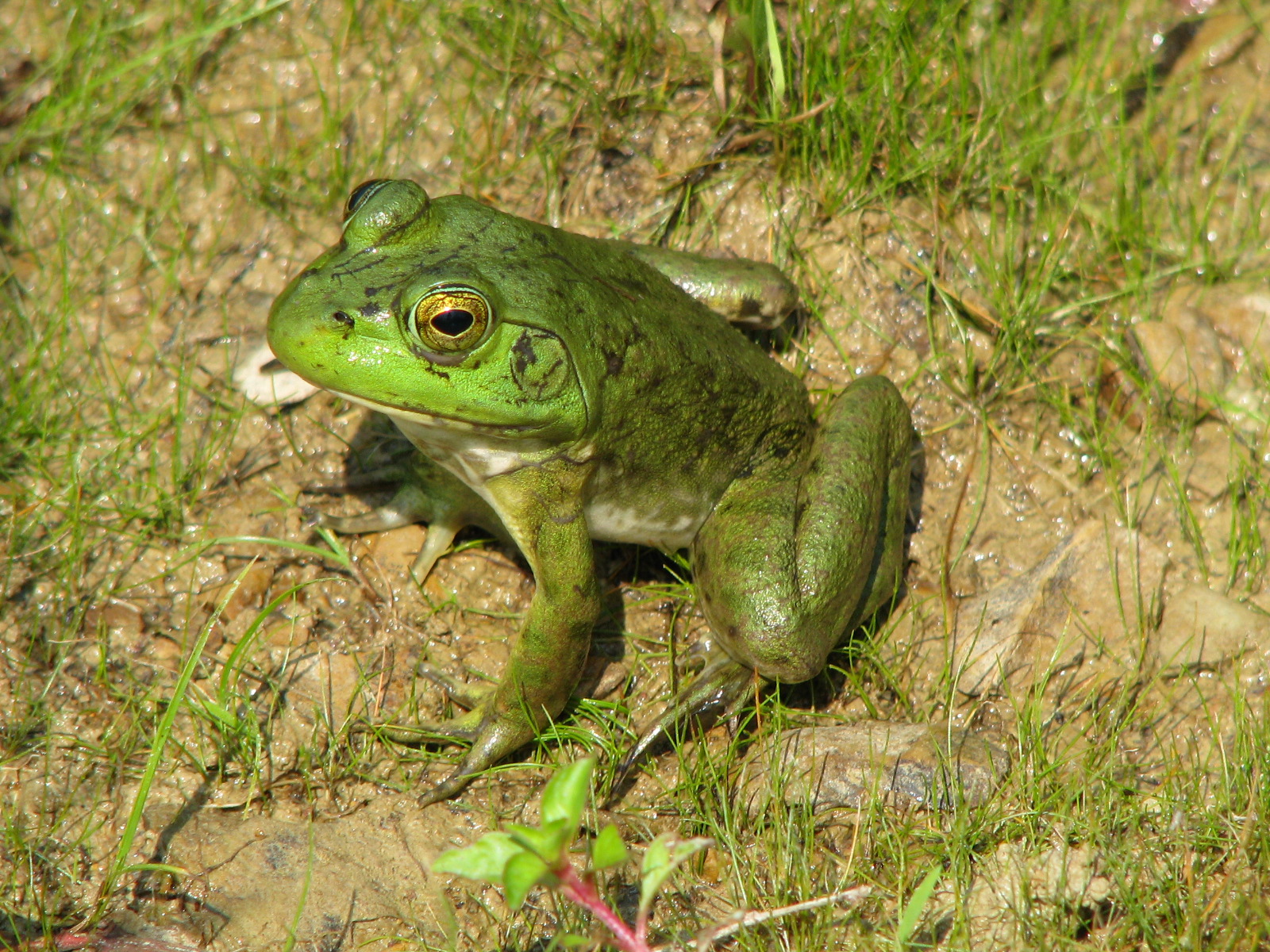
And here's the notorious bull frog that eats anything it can fit in its mouth! Native to the Eastern parts of the United States, the bull frog was imported in the 1890's by Californian entrepreneurs that had a craving for its flesh. Farms were set up and many of the frogs were directly released in ponds. The rest is history. The bull frog eats other frogs and competes for their resources (insects). The native frogs and salamanders never had to compete with the larger amphibians and have no natural defenses.

Out of all the fish in the world, the Asian Carp has had one of the most devastating impacts on aquatic communities. The large carp compete with native fish for food and mud the water due to their bottom feeding tendencies. In the 1960's they were introduced in fish farms to help control algae in the ponds. Due to escapes and flooding they have now found there way into many of North America's waterways.

One of my favorite lizards made the list as well. Green Iguanas have invaded South Florida since the early 1960's due to irresponsible pet owners releasing their unwanted pets. Florida's environment is very similar to their native home ranges in Central and South America which made it ideal for them. They are an aggressive species that compete with native animals for food. On top of that they are great seed dispersers for non-native plants that are found in many peoples' backyards.

This popular pet turtle has caused quite a few problems. The Red-eared Slider is native to the Mid to-South-Central U.S but can now be found across much of North America, Hawaii, and Asia. Like the iguana, irresponsible pet owners are to blame for their invasion, along with captive escapes. They are a very hardy species and compete with native turtles for resources. Just recently Idaho, along with a few other states, have banned them from pet stores. Current owners have to now obtain special permits to keep them.
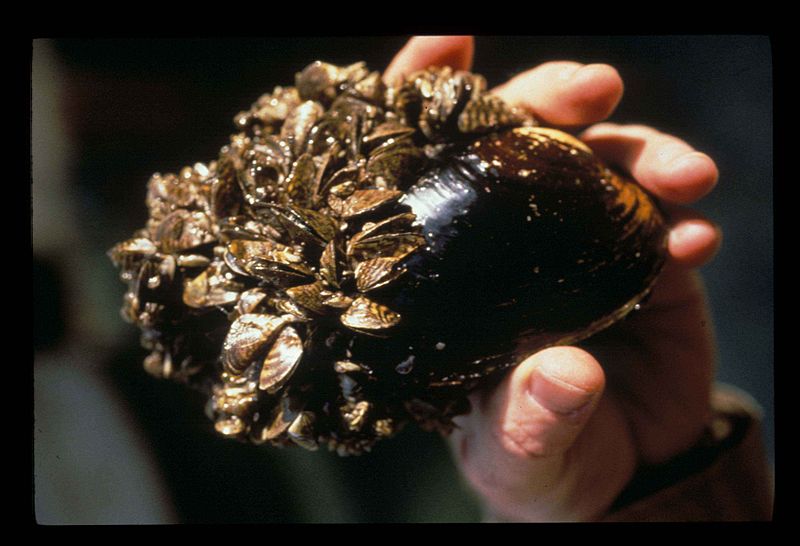
These small, almost identical mollusks, are causing HUGE problems and are alarming wildlife officials and biologists everywhere. The Zebra and Quagga Mussels are native to Eastern Europe and Western Asia. They made their way into the Great Lakes in the late 1980's from boats entering the United States from Europe. They attach to almost any hard surface including native mussels like the one pictured above.

Native mussels aren't the only things they attach to: Here this meter in Lake Michigan is engulfed by them. A single female Zebra Mussel can produce over 5 million eggs in her lifetime! They compete with native fish for food (plankton) and clear the water which promotes algae growth. Scientists still haven't figured out a way to eradicate them. These mussels can be found in 29 states.
Estimated damage for invasive species worldwide is $1.4 trillion!
How To Prevent the Spread of Invasive Species:
* Learn to identify invasive species and try to remove any (plants or animals) you may come across. For animals, this might be difficult. If so you can notify your local Fish and Game office or Department of Agriculture.
* Regularly clean your boots, gear, tires, and check your boat after leaving your destination.
* NEVER release an un-wanted pet.
References:
Beeland, DeLene. "UF Study Recommends Nest-box Control for South Florida Non-native Nuisance Iguanas." Florida Museum of Natural History. Univerity of Florida , 13 09 2007. Web. 8 Mar 2014. <http://www.flmnh.ufl.edu/science-stories/2007/09/13/uf-study-recommends-nest-box-control-for-south-florida-non-native-nuisance-iguanas/>.
"Common carp, German carp, European carp (Cyprinus carpio)." Minnesota Department of Natural Resources . N.p.. Web. 8 Mar 2014. <http://www.dnr.state.mn.us/invasives/aquaticanimals/commoncarp/index.html>.
Defenders of Wildlife , . "Risky Business: Live Animal Imports and Lax Laws." Broken Screens . (2007): n. page. Web. 8 Mar. 2014. <http://www.defenders.org/publications/broken_screens_report.pdf>.
"History of Wild Pigs ." Wild Pig Info . Mississippi State University . Web. 8 Mar 2014. <http://wildpiginfo.msstate.edu/history-wild-pigs.html>.
"Invasive Mussels." National Wildlife Federation. N.p.. Web. 8 Mar 2014. <http://www.nwf.org/Wildlife/Threats-to-Wildlife/Invasive-Species/Invasive-Mussels.asp&xgt;.
"Invasive Species ." National Wildlife Federation . N.p.. Web. 8 Mar 2014. <http://www.nwf.org/wildlife/threats-to-wildlife/invasive-species.asp&xgt;.
"Invasive Species ." Save The Frogs. N.p.. Web. 8 Mar 2014. <http://www.savethefrogs.com/threats/invasive-species/>.
"Invasive Species: What you can do." The Nature Conservancy . N.p.. Web. 8 Mar 2014. <http://www.nature.org/ourinitiatives/habitats/forests/help/invasive-plant-species-invasive-species-education-1.xml>.
Johnson, Leigh . "Red-Eared Invaders Threaten Native Turtles and Human Health! ." Boating Environmental Forum. N.p., 23 09 2013. Web. 8 Mar 2014. <http://ucanr.edu/blogs/blogcore/postdetail.cfm?postnum=11552>.
 Many of you have never heard of Godzilla. Matter-of-fact only my family, close friends, and animal assistants have had the pleasure of actually meeting him. I don't know if they would even classify it as a pleasure, or more or less of a terrifying reminder of why they are happy Godzilla isn't theirs. He charges, tries to whip his tail, sometimes bites, hates my sister and another animal assistant whom will remain anonymous, almost gave my grandma a heart attack, and yet he is still one of my favorite animals I take care of. I'm finally thrilled to be able to share his story...
Many of you have never heard of Godzilla. Matter-of-fact only my family, close friends, and animal assistants have had the pleasure of actually meeting him. I don't know if they would even classify it as a pleasure, or more or less of a terrifying reminder of why they are happy Godzilla isn't theirs. He charges, tries to whip his tail, sometimes bites, hates my sister and another animal assistant whom will remain anonymous, almost gave my grandma a heart attack, and yet he is still one of my favorite animals I take care of. I'm finally thrilled to be able to share his story...

